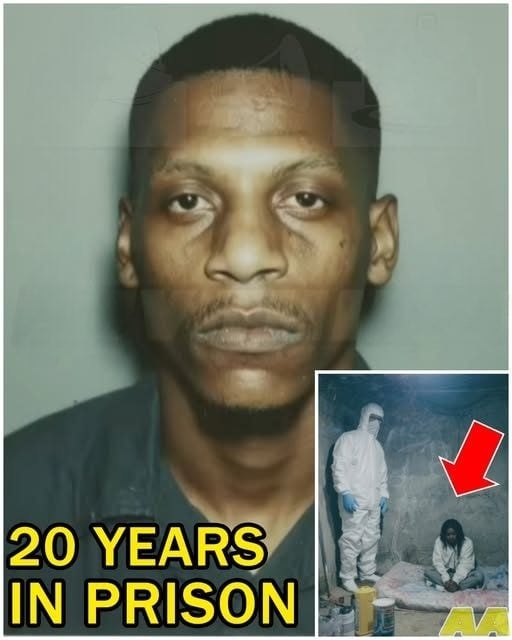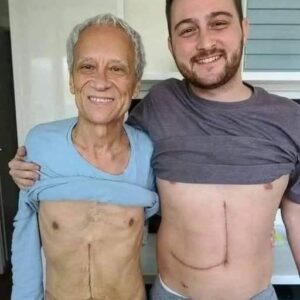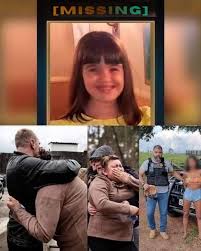
For more than twenty years, Chicago lived under the shadow of a story it thought it already knew — a missing woman, a grieving husband, a conviction that seemed to bring closure. But beneath the headlines and court filings lay a truth that refused to stay buried. When it finally surfaced, it didn’t just change one family’s life — it forced an entire city, and eventually a nation, to confront how fragile justice can be when it’s built on assumption instead of evidence.
At the heart of this haunting story were Marcus and Sarah Holloway — an ordinary couple whose lives were torn apart by a single morning in June 2000 and the chain of events that followed. Their story became a lesson in endurance, love, and the devastating power of a system too quick to decide who’s guilty and who’s not.
Marcus Holloway was a 28-year-old auto mechanic living with his wife and two young children in the suburbs of Chicago. Friends described him as quiet, reliable, and hardworking — a man devoted to family and faith. Sarah, 26, was a teaching assistant at a local elementary school, known for her patience and warmth. Together they lived what most would call an ordinary, peaceful life.
But on the morning of June 27, 2000, everything shifted. Marcus returned home from his overnight shift at the garage around 7 a.m. to find the front door slightly open. The smell of fresh coffee filled the air, and the TV hummed softly in the background. On the kitchen counter sat Sarah’s purse, her phone, and her car keys. The car was still in the driveway. But Sarah was gone.
At first, Marcus thought she had gone for a walk. But as the minutes turned into hours, dread began to settle in. He called her friends, her parents, even the school — no one had seen or heard from her since the previous evening. By noon, he called the police.
The Investigation
What began as a missing-persons report soon spiraled into something darker. Detectives searched the Holloway home, interviewed neighbors, and combed nearby woods and lakes. Within 48 hours, suspicion turned toward Marcus himself — as it so often does when a spouse disappears.
Investigators pointed to small inconsistencies in his timeline, even though he’d worked a verifiable night shift. The neighbors described “raised voices” a few nights earlier, though none could say what was said or who was yelling. When police found a few drops of blood in the garage, it was enough to shift the tone of the case completely.
Marcus was brought in for questioning. After nearly 14 hours without a lawyer, exhausted and confused, he signed a statement he didn’t fully understand — one that detectives later claimed was confession
He was charged with second-degree murder, even though Sarah’s body was never found. The prosecutors argued that Marcus had killed her in a “fit of rage” and disposed of the remains somewhere in the nearby forest preserve. The absence of physical evidence, they said, didn’t erase the “totality of guilt.”
Marcus’s trial lasted only ten days. His public defender failed to challenge key forensic claims, and several of the prosecution’s witnesses — including a jailhouse informant — later admitted they were coached. Still, the jury deliberated less than four hours before returning a guilty verdict.
He was sentenced to 40 years in prison. Sarah was officially declared dead. Their two children went to live with Sarah’s parents, who cut off contact with Marcus entirely. For most people, the story ended there — a tragic domestic crime, another file closed.
For years, Marcus maintained his innocence from a cell in Stateville Correctional Center. He wrote letters to innocence projects, legal aid groups, and journalists, but few responded. One of them who did — investigative reporter Dana Ruiz — would become the turning point in his case.
Ruiz, a Chicago Tribune journalist known for her relentless coverage of wrongful convictions, began digging into the Holloway file in 2012 after noticing glaring inconsistencies. The supposed “blood evidence” was never DNA-tested. The witness statements were contradictory. And no trace of Sarah’s remains had ever been found despite multiple searches.
When Ruiz tracked down the original lead detective, she discovered something astonishing — several boxes of evidence had been logged but never tested. Among them was a small pendant found near a Chicago bus station days after Sarah vanished. It matched one she’d been wearing in family photos.
In 2017, new forensic testing revealed something shocking. The pendant contained a fingerprint — not Marcus’s, but that of a man named Raymond Calder, a convicted burglar who had been arrested in the area around the same time.
Calder, serving time in another state, eventually confessed to encountering Sarah that morning. He claimed she had accepted a ride from him after an argument with her husband, only for things to “get out of hand.” His taped confession, verified with details only the killer could know, changed everything.
After 17 years behind bars, Marcus Holloway was released in 2018. His first words to reporters outside the courthouse were quiet but powerful: “They buried my wife, then they buried me. Now it’s time to dig up the truth.”
The case sparked national outrage. It became a symbol of how tunnel vision and flawed police work can destroy innocent lives. The city of Chicago issued an official apology, and Marcus later received a $4.5 million settlement — though no amount could replace what he’d lost.
When Sarah’s parents finally met with Marcus again, the encounter was described as “tearful and wordless.” They embraced him, realizing they had grieved the wrong man for almost two decades.
The Holloway case has since become a mandatory study in criminal justice programs across the country. It highlights how quickly investigations can shift from search to blame — and how difficult it is to reverse that course once a narrative sets in.
Dana Ruiz later published a book titled The Buried Truth, which detailed not only the procedural failures but the quiet resilience of a man who refused to let the world forget him. “Marcus never hated anyone,” she wrote. “He just wanted people to admit they were wrong.”
Today, Marcus lives a quiet life in southern Illinois. He works with organizations that help exonerated individuals rebuild their lives after wrongful imprisonment. “You can’t get back time,” he said in a recent interview. “But you can decide what to do with what’s left of it.”
As for Chicago, the case forced the city to reform its interrogation practices and evidence-handling procedures. Several officers involved in the original investigation faced internal discipline, and the state expanded access to post-conviction DNA testing.
But the larger lesson remains human — and haunting. Justice is only as strong as the people who pursue it, and when assumption replaces truth, innocence becomes its first casualty.
The Holloway story isn’t just about a man freed. It’s about the cost of a system that forgot to ask one simple question before closing the book: What if we were wrong?





